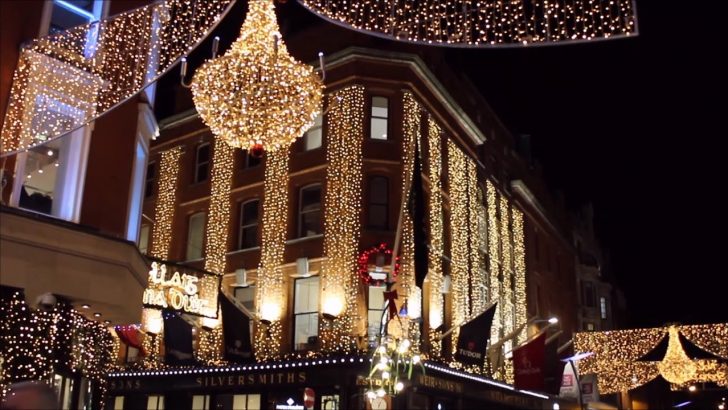Notebook
Fr Bernard Healy
At the start of November this year, various Facebook friends began posting images and messages stating that with Hallowe’en behind us, now was the time for Christmas songs and decorations. Christmas seems to start earlier each year, but the current fad seems to be for the Christmas Season to encompass the whole of November. I doubt that many people actually spent November draping everything with tinsel, but our culture’s celebration of Christmas is disconnected from the liturgical celebration of the Nativity.
With Christmas lights being switched on and shops decorated in the middle of November, it’s no wonder that people are ready for Christmas to be over when December 25 rolls around.
Midnight Mass or the turkey leftovers of St Stephen’s Day mark the end of the Christmas season rather than being at the beginning of our celebration.
Although starting Christmas earlier is driven by commercial pressures, the big problem isn’t the commercialisation in itself, but the way the birth of Christ becomes the cue to stop our celebrating rather than being the beginning and cause of our feasting.
The Church marks the four weeks of Advent before Christmas, but without a deliberate effort to mark this season, the spiritual value of Advent is swamped by our premature Christmas feasting.
My first December back in Ireland after several years of seminary in Rome was a bit of a culture shock. The Italians don’t anticipate Christmas quite so early, and the seminary’s emphasis on what is happening in the liturgical calendar made for a much more fruitful build-up to Christmas. (I sometimes wonder whether it is only in seminaries and religious houses that Advent is properly appreciated.)
During the Masses of Advent, we see a sobriety and a restraint in what the Church prescribes for the season. The Gloria isn’t sung, the vestments are violet and the Advent wreath gives the sense of gradual preparation for a great feast.
Reminder
The first weeks of Advent focus on the second coming of Christ – a reminder that we live not simply for the present, but with the hopeful expectation of Christ giving a definitive resolution to the course of human history. We are invited to measure ourselves against the demands of the Gospel and cultivate an expectation that God’s saving help will not fail us.
The end of Advent places us with Mary and Joseph and the journey towards Bethlehem; a reassurance that just as the longings of the prophets were fulfilled by Christ’s birth in the stable, so we too are consoled by the nearness of Emmanuel – God-with-us.
Can we try to make the coming weeks a preparation for rather than an anticipation of Christmas?
The Advent fasting of previous generations might not be practical, but we could all exercise a little restraint in the weeks before Christmas. We might hold off on the decorating so that the transformation of our homes is more closely associated with the coming of Christ Himself. It’s also a good time to make a sacrifice in favour of the poor – in memory of the Holy Family’s poverty and as a conscious response to the message of those prophets who prepared the way for Christ.
***
Speaking to some pupils of Polish descent in one of my parish’s primary schools, they tell me that Polish Christmas traditions preserve the idea of fasting in preparation for Christmas. Polish families gather for a big meal on Christmas Eve, the Wigilia or Vigil. Despite the fact that this meal can be elaborate, with many courses and tasty desserts, meat is never served. The main course is always fish, a reminder of the fact that abstinence from meat on Christmas Eve was once part of the Church’s preparation for the Christmas Feast.
***
In their book Catholic and Loving It, Sabitha Narendran and Andrew Salzmann suggest a good way for families to prepare spiritually for Christmas. The empty Christmas crib is set up in the home at the start of Advent, and straw obtained to decorate it. During Advent, whenever a family member performs an act of kindness, they can add a piece of straw to the crib. When Christmas comes around, and the Christ Child is placed in the manger, his home has already been prepared by the sacrifices and kindnesses of the Advent season.



